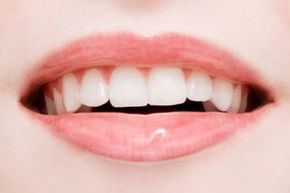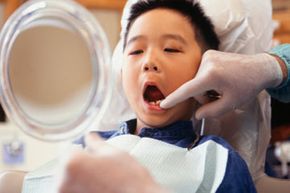Saliva heals. Animals tend to wounds by licking them, and in recent years, studies have shown that human saliva speeds up healing in people, too [source: JADA]. Naturally occurring proteins, enzymes and cellular compounds in saliva can fight infection and slow tissue loss as they penetrate open or broken layers of skin. These same compounds help heal hard teeth, too, as they work to re-harden or remineralize the enamel. Enamel itself can't be re-grown or harden to its original state, but it can self-repair and stay strong if remineralization keeps in step with mineral breakdown -- or demineralization.
Teeth are tough on the outside because of the tight mineral bonds of enamel -- the strongest substance in the human body. And although it seems watery, bland and even weak, saliva is strong enough to help keep teeth hard. As acids and carbohydrates from food and drink -- and the bacteria that thrive off of them -- combine and assault teeth, they corrode the enamel and break down the mineral fibers almost constantly. This process is part of demineralization. When the mouth contains healthy levels of saliva, though, it not only crushes starches, it also keeps calcium and phosphates flowing around so teeth can remineralize to combat the demineralization.
Advertisement
If saliva didn't help rebuild minerals and strengthen the crystalline bonds, teeth would lose their hard-coated enamel covering, and bacteria and acids would get below the enamel to the dentin. Without remineralization, teeth would become soft and chewing would be difficult. Soft teeth would be no match for food that needs to be broken down before getting digested in the stomach, and the very nutrients needed to keep the body and the teeth healthy would be hard to absorb [source: Madrigal].
In a regular or normal mouth, teeth will stay tough and protected but sometimes bacteria and acids win the battle and overtake the saliva balance, leading to plaque, tooth decay and cavities. Poor hygiene, a high-sugar or acidic diet, and tooth damage increase demineralization, as can illness and medication, so knowing how remineralization works can help you keep your enamel and teeth strong.
The hard work of saliva in this process is nothing to spit at. We'll look at how teeth remineralize naturally with the help of salivation, next.
Advertisement


